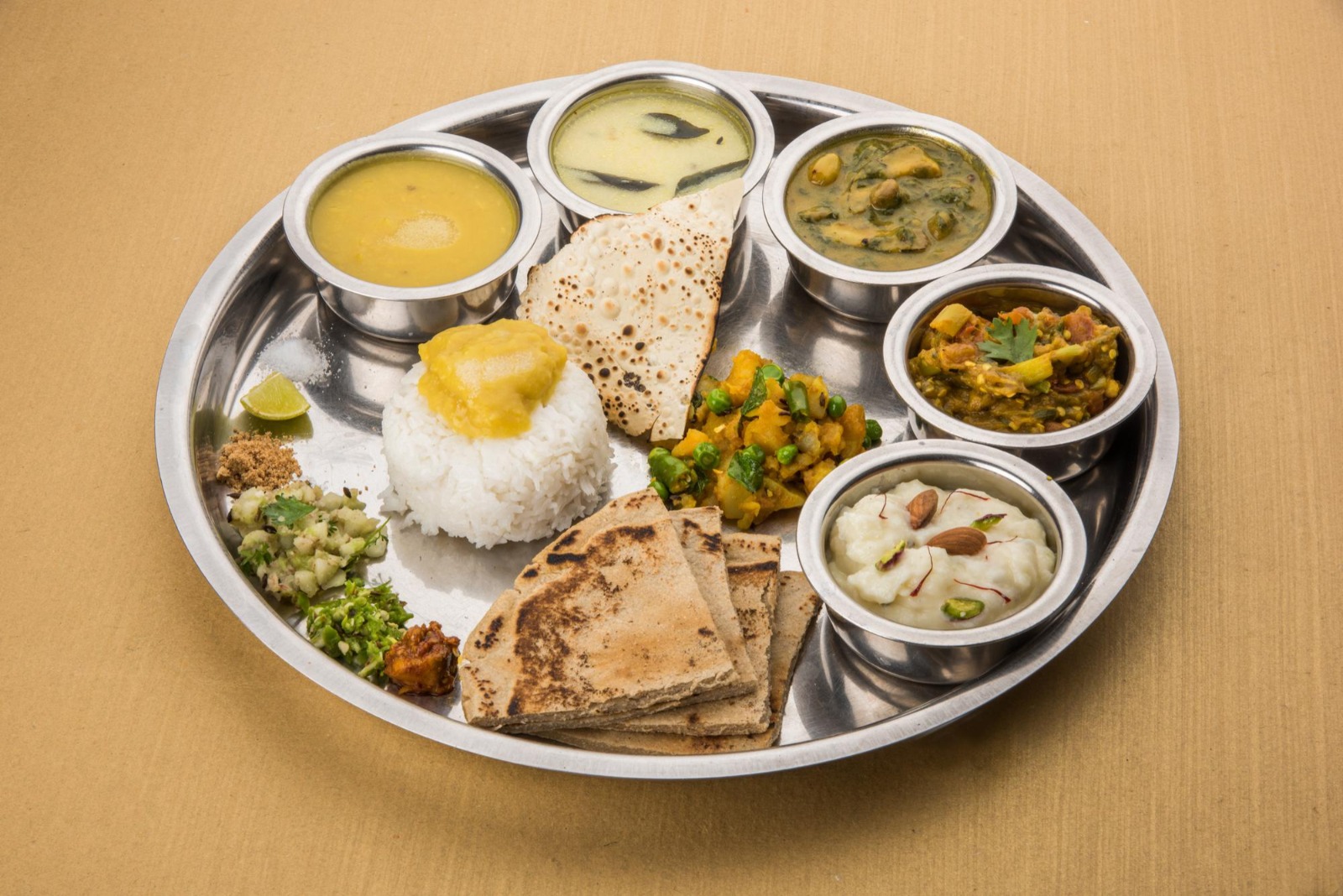
There’s something comforting about returning to a place that feels unchanged, even as the world outside whirls faster than ever. This morning, I walked into the iconic Sagar Ratna in Defence Colony, the very first of its kind in Delhi, and for a moment, it felt like stepping into a memory. The simple steel tumblers, the scent of curry leaves sizzling in hot oil, and the quiet bustle of regulars chatting over steaming sambhar—it all transported me straight to the coastal kitchens of the South.
Established in 1986, this was the pioneering outlet of what would go on to become one of North India’s most beloved chains for authentic South Indian vegetarian fare. Sagar Ratna, to many, isn’t just a restaurant—it’s a culinary landmark. What started as a modest eatery by Jayaram Banan soon redefined Delhi’s taste for dosas, idlis, and filter coffee. But while many outlets have opened since, there’s something irreplaceable about the original in Defence Colony. It still holds the warmth of early beginnings.
I came hungry, and I left with a full heart—and an even fuller stomach. Here’s what I ordered:
1. Idli Chaat
Who knew that something as humble as the idli could be transformed into an explosion of textures and flavors? Their Idli Chaat is a north-south fusion marvel: soft idli cubes fried until golden, then layered with tangy chutneys, crunchy sev, curd, and a dusting of chaat masala.
Idlis are made from fermented rice and urad dal batter—light, gut-friendly, and rich in probiotics. Even when fried, their oil absorption is minimal, making this a reasonably healthy indulgence. The yogurt adds protein and probiotics, aiding digestion, while the spices stimulate metabolism.
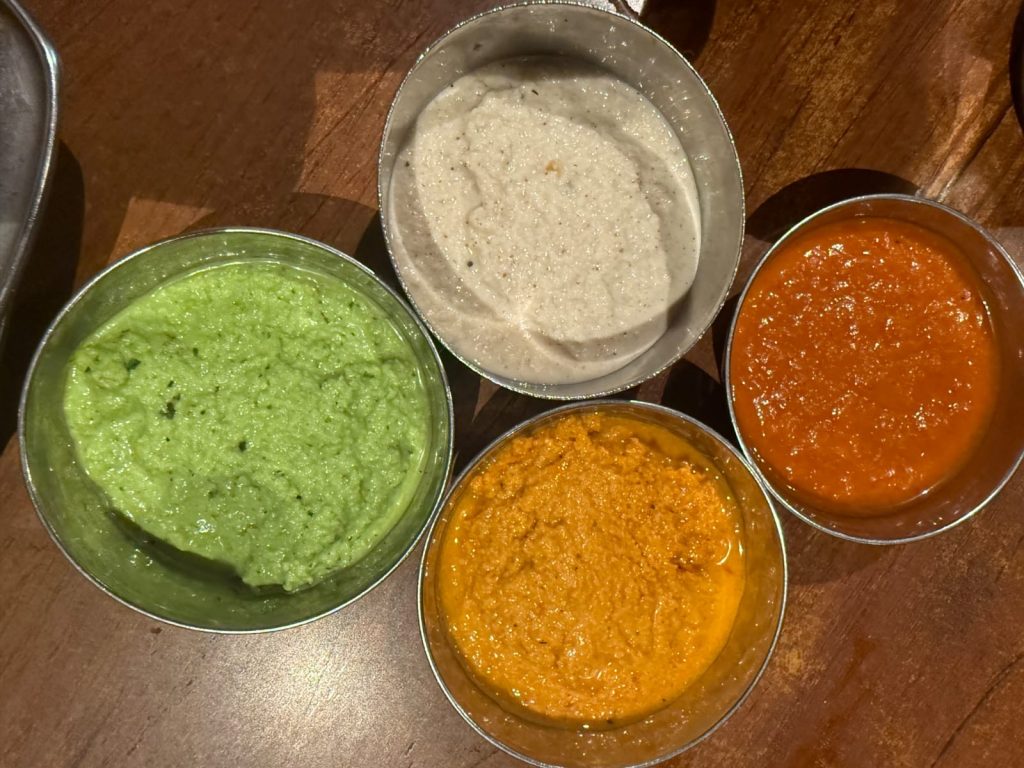
2. Mini Idlis in Sambhar
This is comfort in a bowl. A handful of soft, pillowy mini idlis bathed in steaming hot sambhar, garnished with mustard seeds, curry leaves, and fresh coriander. The sambhar was aromatic, balanced, and deeply nourishing.
Idlis are steamed making them ideal for low-fat diets. Sambhar, a lentil-based stew with vegetables and tamarind, is rich in plant-based protein, fiber, and antioxidants. Together, they make a wholesome, easily digestible meal that’s both satisfying and light.
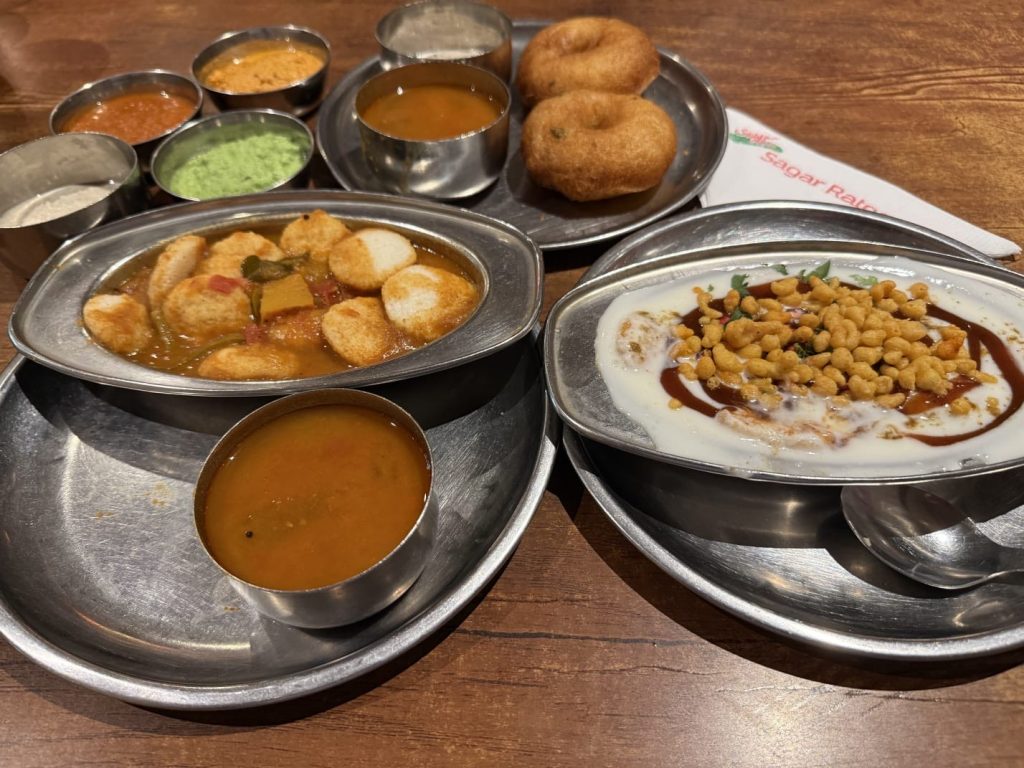
3. Cone-Shaped Masala Dosa
The star of the table, as always, was the majestic Cone Dosa—crispy, golden, and artfully shaped, encasing a generous filling of spiced mashed potatoes. Served with coconut chutney, tomato chutney, coriander chutney, spicy tomato chutney and more sambhar, each bite was a play of crunch, spice, and warmth.
Dosa batter is fermented, which improves its bioavailability of nutrients and promotes good gut bacteria. The potato filling, though carb-heavy, offers resistant starch when cooled slightly—good for blood sugar control. Paired with chutneys made from coconut and lentils, the meal offers healthy fats, protein, and essential micronutrients.
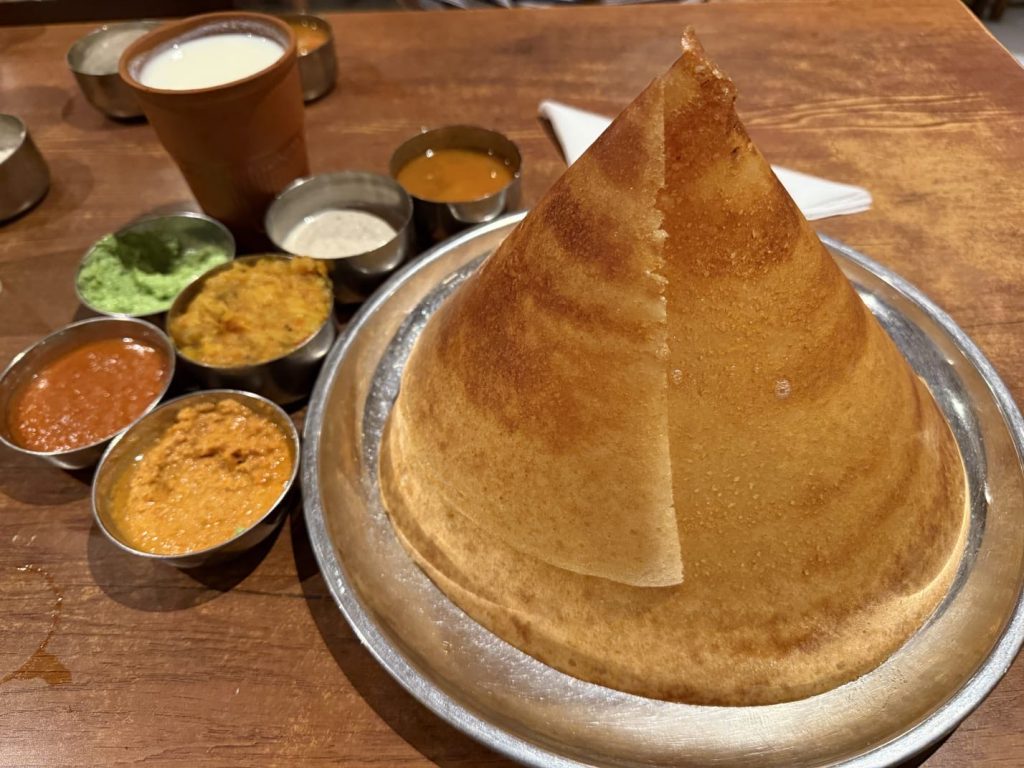
4. Sweet Lassi
To cool off the spice and complete the meal, I ordered a sweet lassi, served chilled in a tall glass. Creamy, frothy, and mildly sweet, it was the perfect palate cleanser.
Lassi is not only refreshing but also excellent for digestion. Made with probiotic-rich yogurt, it helps balance gut flora, cools the body, and provides a good dose of calcium and vitamin B12.
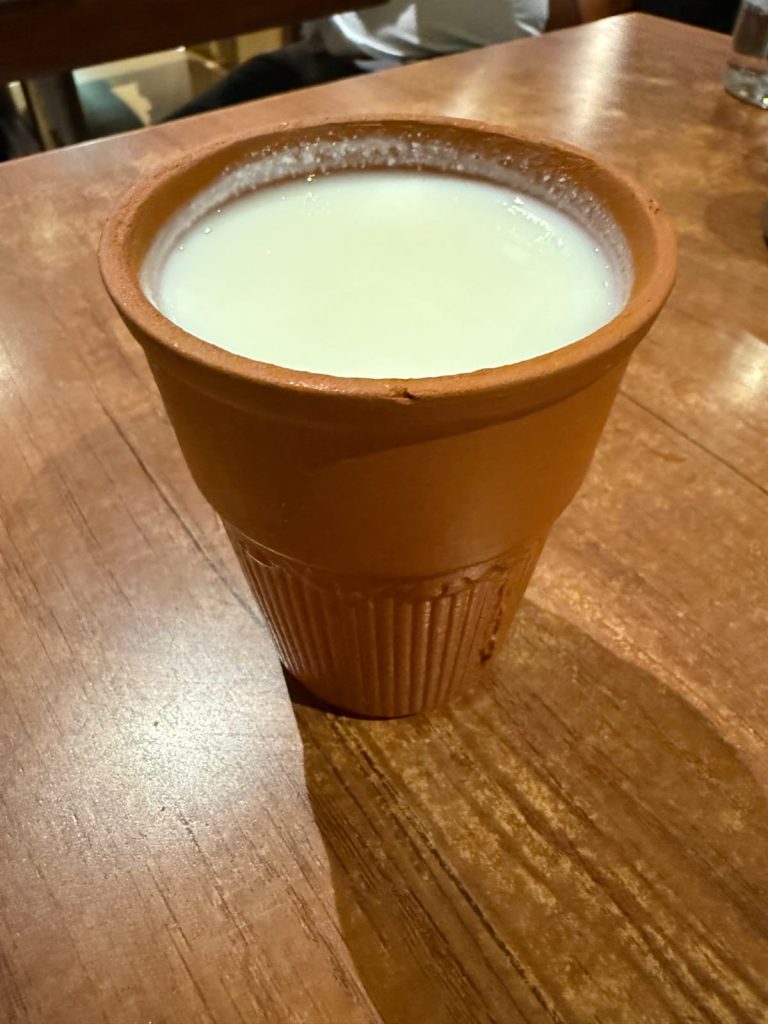
5. Paan
No true Delhi food experience ends without a paan. I opted for the classic meetha paan—betel leaf stuffed with gulkand (rose petal preserve), fennel seeds, and desiccated coconut.
While often considered a post-meal indulgence, paan also has digestive properties. Betel leaves are known for their antimicrobial properties, and gulkand acts as a natural coolant.
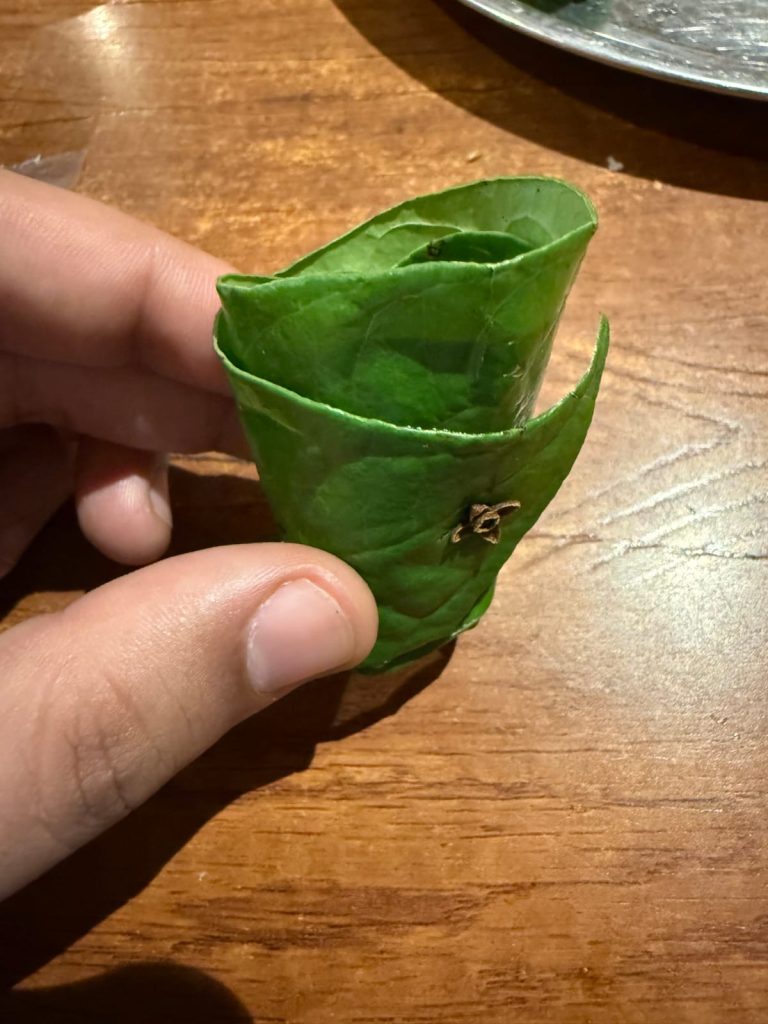
As I sat sipping the last of my lassi, watching families walk in and the waiters glide past with trays of filter coffee and dosas, I realized why Sagar Ratna still holds its place despite the culinary chaos of Delhi. It’s not just about the food—it’s about memory, authenticity, and simplicity.
For anyone craving a real taste of South India, untouched by trends or fancy drama, head to the Defence Colony outlet. Go hungry. And go with time. Because meals like these deserve to be savored, not rushed.
Until next time!